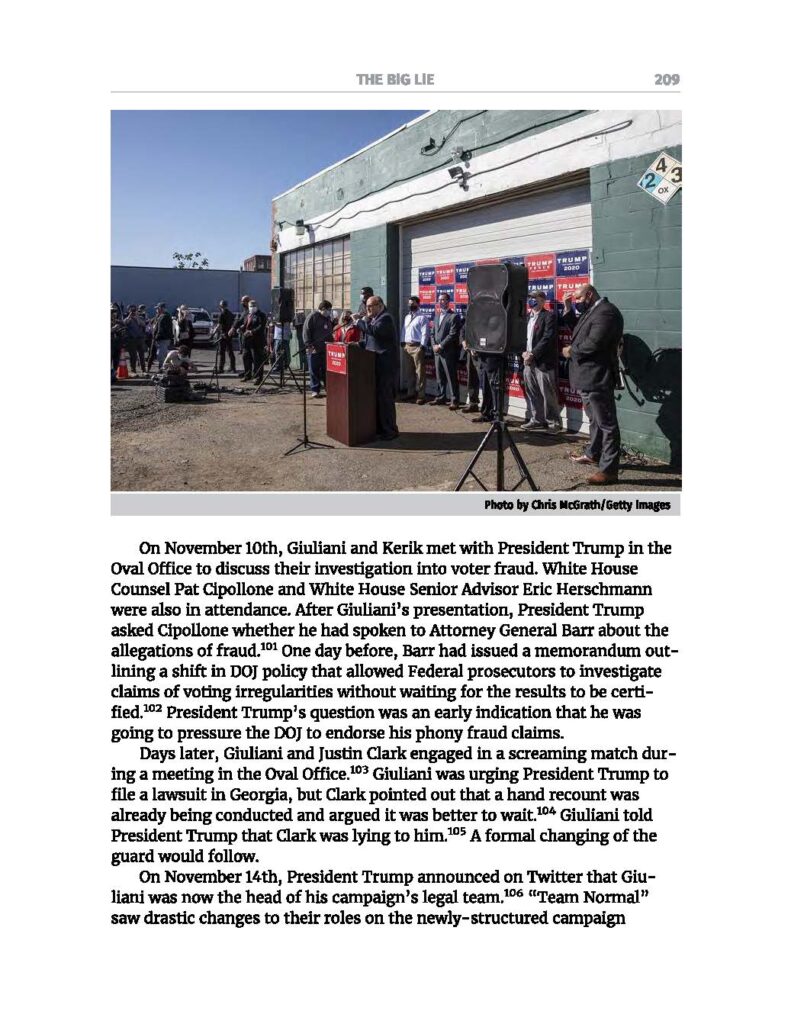There are two valuable lessons from the shortcomings in how the scores of photos were included in the 845-page January 6th Report: the need for numbered image labels and descriptive captions
Consider these two report pictures from the Four Seasons Total Landscaping press conference:


Shortfall: Missing numbered labels.
Notice how these photos do not include a “Figure X” reference label?
Pairing a numbered “figure” label with included images creates an important reference for future writings that reference the image. Think of it like you would marking exhibit numbers for a deposition or trial.
Microsoft Word has an easy-to-use feature to create and add these numbered labels.
Shortfall: Inconsistent content captions.
The first photo, from page 20 of the Report, includes a helpful and descriptive photo caption of what the photo represents. Captions also help the writer focus the sighted reader on what is important.
Too often, unfortunately, we forget that not everyone in our audience is sighted. Written image captions are vital for those who use digital screen readers to “read” the content.
Notice how the second photo, from page 209 of the Report, lacks a descriptive photo caption? Those who use digital screen readers are left not knowing if the image is important or not. Or if it is important, how?
Those who practice before the Michigan Supreme Court should be particularly sensitive to the need for descriptive image captions because one of the court’s justices is blind. The justice relies on staff to read the printed filings and describe any images to him. If you want greater control over how your images are described to the justice, include descriptive captions.
Caption content drafting can draw from the alt-text drafting best practices. Imagine a weather forecast, for example. Helpful alt text might say, “Forecast showing temperatures in the high 20s on Sunday and Monday before jumping to 40 on Tuesday.” That version would be far more informative than “Weather forecast picture.”
Bonus resource: Amy Cesal’s “Writing Alt Text for Data Visualization” offers alt-text (or caption) writing suggestions for charts and other data visualizations. The suggestions include how to explain the chart type, the type of data, and the reason for the chart.
Something to consider when inserting images into your writing: Contrary to the cliche, an image is not worth a thousand words if there’s no accompanying descriptive caption (or one that’s incomplete).
A case for content warnings
A wrongful death lawsuit was widely shared across Twitter last week. I immediately started to scroll through the linked complaint.
I wish that the complaint’s cover included a content warning because I was not prepared for seeing several color autopsy photos as I was scrolling. Ugh.
There is a lesson here.
A general practice of including content warnings makes sense, I believe. Think about how people can be anywhere (office, home, swim meet, grocery store line, coffee shop) reading legal filings and anyone else (colleague, stranger, small children) could be within eye glance screen range. Seeing such images like that would be jarring and unfortunate.
I am not suggesting that the images should not be included in the legal writings. But readers should be given a heads-up at the start so that they can decide how to proceed.
No rule prohibits including content warnings in legal writings. I encourage all to be kind and include them when the opportunity presents itself.
